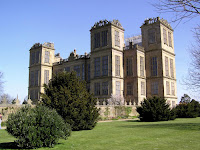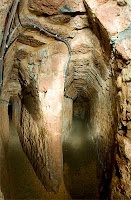A Meeting with a remarkable tree!

This is me, with Monty the dog, sitting in the courtyard of Skipton Castle under the yew tree that was planted in 1659 by Lady Anne Clifford to mark the repair of the castle after the English Civil War. Despite enduring a three year siege during the Civil War, Skipton is one of the most complete medieval castles in England. The yew tree stands in the Conduit Court (so called because it was where the spring water bubbled out) in the centre of the castle, surrounded by a range of early Tudor buildings that remain unaltered and intact. I've never seen a tree growing inside a castle courtyard like this before although my husband swears he has been somewhere else where there was a tree just like this - and he has been racking his brains ever since to try and remember where it was! It was very peaceful and cool to sit beneath this ancient tree on what was a very hot day and read all about the castle in the guidebook. It was also very nice to be able to take our very well-behaved dog int...





